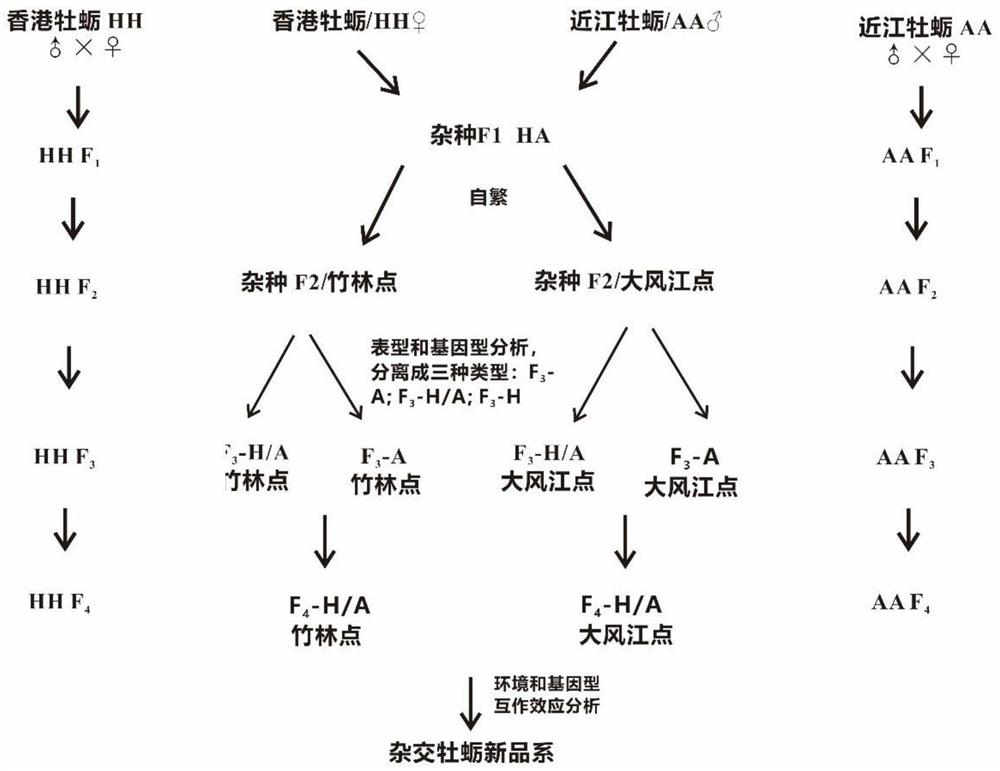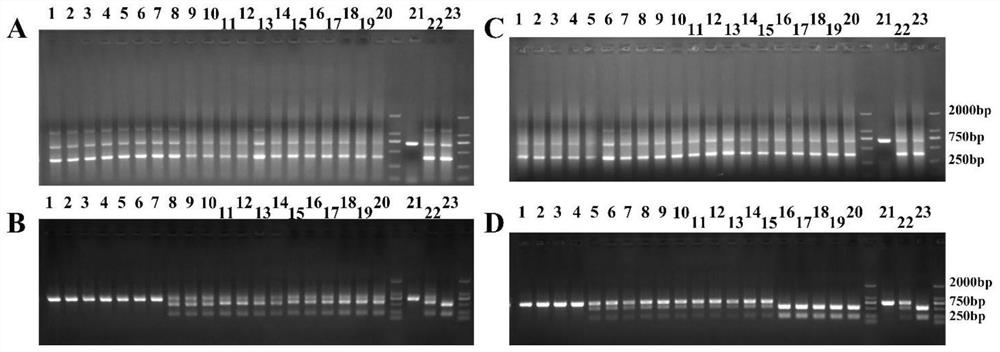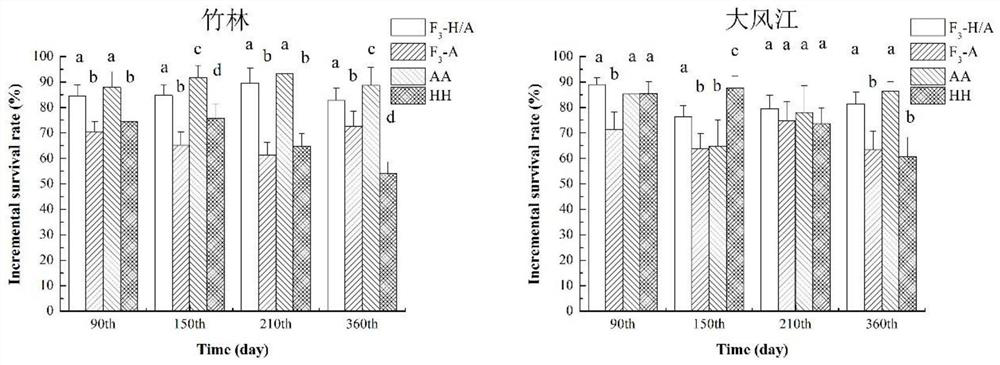Cultivation method of new high-salt-resistant hybrid oyster strain in South China
A technology in South China and a cultivation method, which is applied in the cultivation of new strains of high-salt-tolerant hybrid oysters in South China, can solve the problems of low sales and prices, reduction of breeding area and yield, and increase of oyster mortality.
- Summary
- Abstract
- Description
- Claims
- Application Information
AI Technical Summary
Problems solved by technology
Method used
Image
Examples
Embodiment 1
[0029] a. Hybrid F 1 Preparation: In July 2016, gonad-mature Hong Kong oysters and near-river oysters were obtained from Beihai, Guangxi. They were temporarily raised for 5 days in the southeast test field of Zhanjiang Marine Economic Animal Experimental Station, Chinese Academy of Sciences, Zhanjiang, Guangdong; two parents were phenotyped and dissected. The hybrid F 1 , at the same time set the Hong Kong oyster self-propagation group (HH)F 1 Self-propagating group of Hejinjiang oyster (AA) F 1 . Three groups of spat were arranged in the Zhulin Salt Field in Beihai (with a salinity range of 28-32ppt) and the Dafengjiang sea area of the Beihai Sea (with a salinity range of 15-25ppt), and the phenotypic traits were compared.
[0030] b. Hybrid F 2 Comparison of phenotypic traits, segregation and identification of traits, evaluation of reproductive potential, and screening of excellent segregating types under different environmental effects: In June 2018, at the Southeast ...
PUM
 Login to View More
Login to View More Abstract
Description
Claims
Application Information
 Login to View More
Login to View More - R&D
- Intellectual Property
- Life Sciences
- Materials
- Tech Scout
- Unparalleled Data Quality
- Higher Quality Content
- 60% Fewer Hallucinations
Browse by: Latest US Patents, China's latest patents, Technical Efficacy Thesaurus, Application Domain, Technology Topic, Popular Technical Reports.
© 2025 PatSnap. All rights reserved.Legal|Privacy policy|Modern Slavery Act Transparency Statement|Sitemap|About US| Contact US: help@patsnap.com



